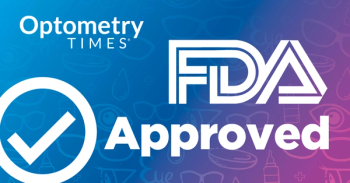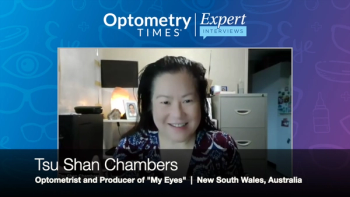
- December digital edition 2021
- Volume 13
- Issue 12
Viewpoints: Remote monitoring centers for dry AMD
Roundtable of experts discuss impact, management of retinal disease.
Editor’s note: The following discussion was produced in partnership with Notal Vision.
On September 15, 2021, Optometry Times® hosted a
The discussion was moderated by John Rumpakis, OD, MBA, president and CEO of Practice Resource Management in Lake Oswego, Oregon. The participants were Steven Ferrucci, OD, chief of the optometry section at Sepulveda VA Medical Center in North Hills, California, and a professor at Marshall B. Ketchum University Southern California College of Optometry; and Jaya Pathapati, OD, of Eye Care Plus in Amarillo, Texas.
Related:
AMD treatment
The panel opened with Ferrucci and Pathapati agreeing that early diagnosis and intervention for AMD is crucial. To that end, Rumpakis asked them how often they see patients with a genetic predisposition for AMD in nonremote settings.
Both concurred that they use a mix of the patient’s current macular degeneration and their genetic and personal history to determine how often they need to be seen. This ranges from once every 3 months to once a year.
Ferrucci and Pathapati emphasized that patient education is a vital part of treatment. Actions such as showing patients fundus photos helps patients visualize what is happening to them and what the goals of treatment are. It is also important to talk through the costs of procedures and the policies of insurance providers in order to form a game plan.
They then discussed the benefits of early patient diagnosis.
“The earlier a diagnosis, the better,” Pathapati said.
She reiterated that education helps lead patients to cooperate and aid in the detection process.
Related:
Ferucci stated that optometrists should talk to patients with mild dry AMD about things they can do to prevent their condition from getting worse and should seek to detect patients who have converted to wet AMD as soon as possible.
“The sooner we can detect that conversion, the sooner we get them treatment, the better off the patient will be,” Pathapati said.
Remote monitoring
Pathapati noted that remote monitoring is important because the Amsler grid is an outdated tool with low patient adherence. Ferucci added that patients’ conditions can convert between appointments, making monitoring even more crucial.
Ferrucci noted that the remote monitoring center will alert the practitioner when there is a significant change in the patient, and the practitioner will in turn call the patient in to determine if they have converted.
Pathapati also feels more comfortable letting patients who have to travel to see her wait longer between appointments when she can maintain their quality of care with remote monitoring.
Related:
Rumpakis noted that the remote monitoring centers are independent entities, which the physician refers the patient to. The physician is then the beneficiary of the monitoring. Ferrucci stated that this process is seamless.
The center sends patients the remote monitoring unit and trains them on how to use it. If there’s a significant change, the center will send an alert to the patient and to the doctor’s office instantaneously.
Pathapati said she receives a monthly report from the monitoring center that lists the patients, has plentiful data to review, and is easy to access.
She stated that patients have peace of mind and “feel so much more comfortable that I’m going to be monitoring them.” Ferucci added that there is also more adherence than with an Amsler grid, because the center can see if the patient is doing the test and remind them.
Economics of remote monitoring
Rumpakis then discussed the economics of remote monitoring. The center is a separate entity, but the time spent reviewing the data can be the basis for billing. He also discussed the codes that have come out and their impact on remote monitoring.
“I think this is really going to impact the future of how we start to manage retinal disease. As much as I hate to say it, …there are some out there that unfortunately only approach technology if there is a reimbursement in it.”
Related:
Pathapati responded that it is good to be reimbursed properly, “but, at the end of it, we do have to make sure that the patient is cared for at the highest level.” She also pointed out that the technology attracts new patients and new revenue helps profits.
Ferrucci added that, throughout the years, various companies have approached him to give his feedback on their technology. While there have been some technologies that he thinks would be great for patient care, there’s no way these would be economically feasible, he said.
“There are other ones that I’ve seen that I don’t think are good for patient care but a doctor can bill and make money on,” he explained. “But when there’s something like this that can help the physician take better care of the patient and it can economically help a practice, to me that’s the win-win. That’s the best situation.”
Watch the full Viewpoints discussion:
Articles in this issue
almost 4 years ago
A chance to be the heroalmost 4 years ago
Careful evaluation of ophthalmic diagnostics in retinal casesalmost 4 years ago
Examining the essential role of the lymphatic system, at your disposalalmost 4 years ago
Five ways to stand out with specialty contact lensesalmost 4 years ago
Visualizing periphery is part of a comprehensive eye examalmost 4 years ago
Dry eye treatments appear in unlikely placesalmost 4 years ago
Retinal findings present in pediatric casealmost 4 years ago
2021 American Academy of Optometry meeting recapalmost 4 years ago
Effects of pregnancy on keratoconusabout 4 years ago
Eye drops for presbyopia treatment receive FDA approvalNewsletter
Want more insights like this? Subscribe to Optometry Times and get clinical pearls and practice tips delivered straight to your inbox.



















































.png)


